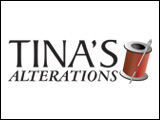The Prairie Swine Centre is advising hog producers to be aware of the potential risks posed by fusarium head blight contaminated feed grains.
In response to concerns related to fusarium head blight in feed grains this year the Saskatoon based Prairie Swine Centre has issued a fact sheet dealing with “Mycotoxins in Swine Diets.”
The fungal disease affects cereal grains, primarily wheat and barley, producing deoxynivalenol or DON, a mycotoxin commonly referred to as vomitoxin.
Fusarium tends to be most prevalent in Manitoba but contaminated grains have also been reported in Saskatchewan this fall.
Dr. LeAnn Johnston, a research scientist nutrition, says the mycotoxin can cause immunological problems in swine but the biggest concern is that it will cause pigs to refuse feed.
The mycotoxin levels that I’ve been hearing about five parts per million which then, when you put them into a diet, may cause a diet of two or three parts per million and we start to see problems at one part per million in swine diets.
If they think that they might have mycotoxins or vomitoxin in their grains they should test for vomitoxin.
Try to reduce the amount of grain that has vomitoxin in it going to swine.
You can feed poultry or growing cattle higher levels of it than you can swine.
They are less susceptible to it.
One part per million is where we expect pigs to start backing off feed.
If you’ve got higher levels than that then you will expect a reduction in feed intake.
If you can’t avoid using those grains for your swine it’s probably best to feed the higher levels to your older pigs, you’re grow-finish pigs, and then keep your cleaner grains for your nursery and your breeding stock.
Dr. Johnston recommends watching feeds closely and having them tested if fusarium is suspected.
Source: Farmscape.Ca



